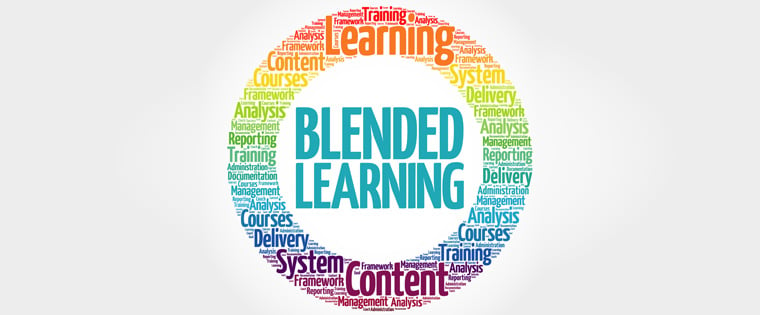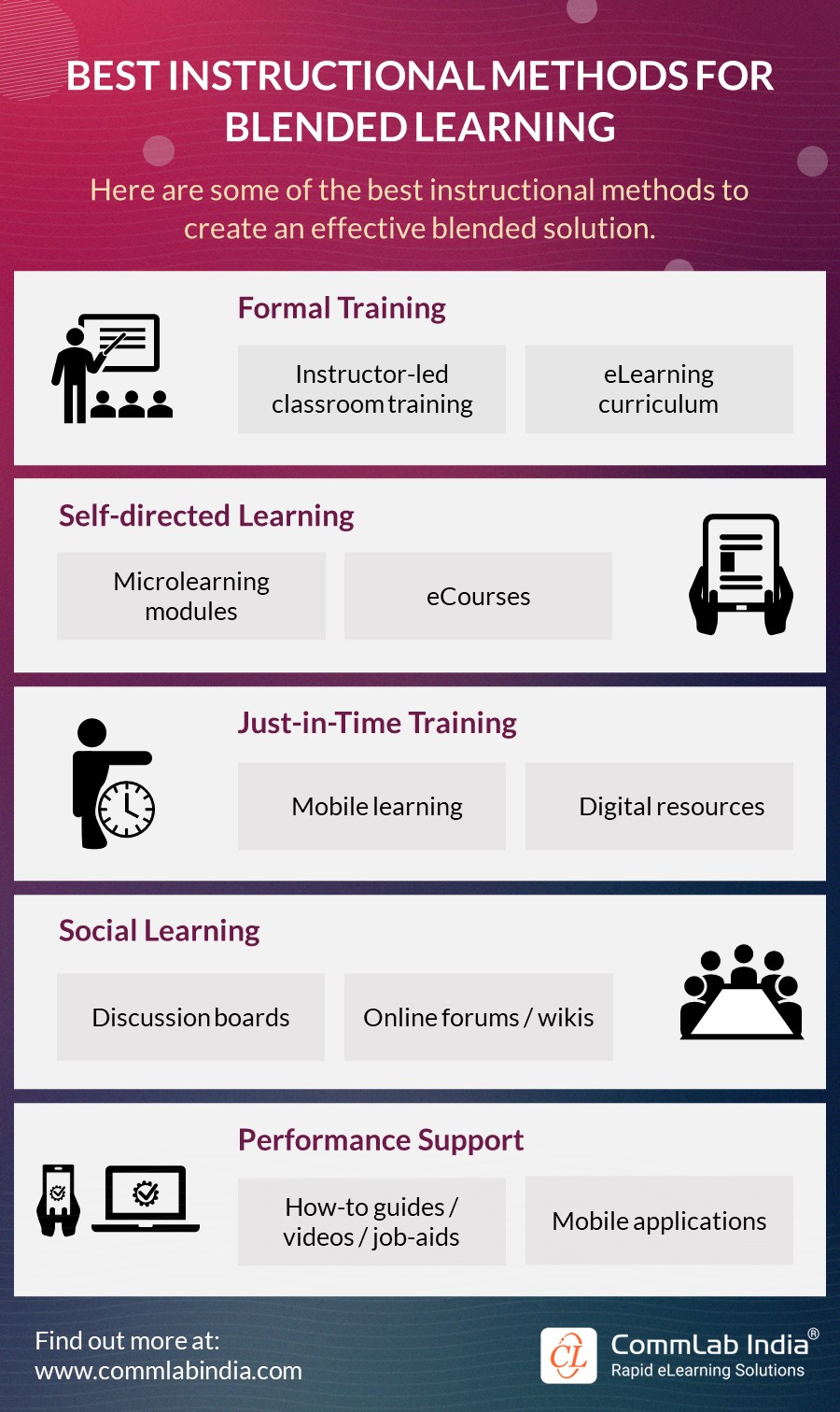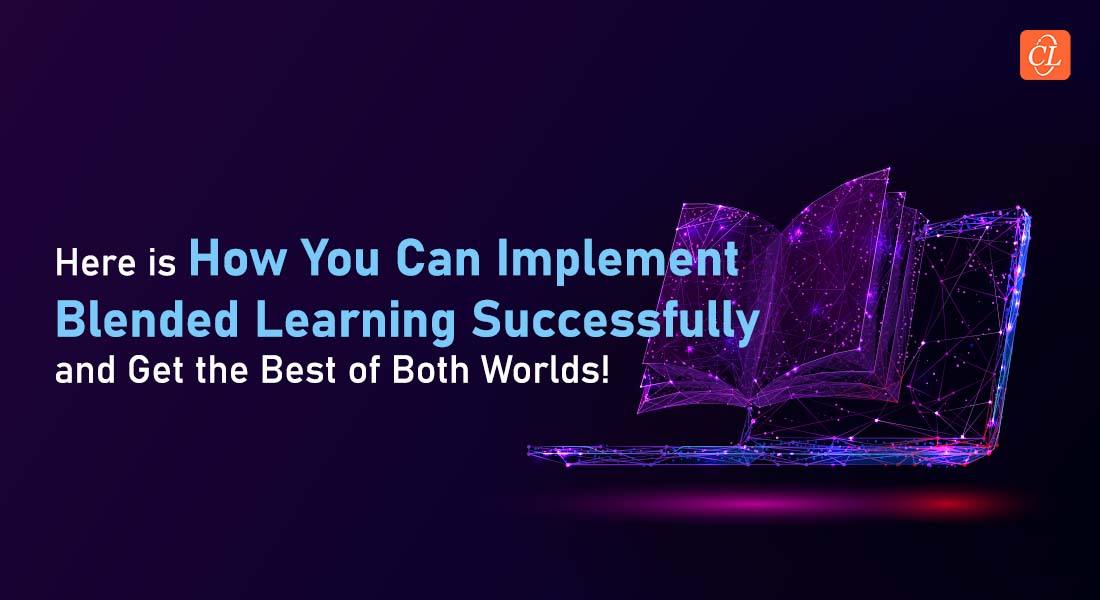Plan Your Blended Learning Approach: A 3-Step Process

Most learning and development professionals have heard of blended learning. It’s even possible that you yourself would have tried to incorporate it in your training strategy, or are planning to. Either way, the term itself has been thrown around so much that it frequently ends up getting misused. Before we proceed to understand how to approach blended learning, let us first see what it really means:
Blended learning is a learning technique where a learner learns at least in part through delivery of content and instruction by means of digital and online media with some element of control over time, place, path, or pace. Its biggest advantage is that it leverages the benefits of instructor-led, classroom training and online learning, i.e., it offers the best of both worlds. It’s especially important in today’s training scenario because as digital fluency increases globally, blended learning is being accepted more and more by organizations all around the world in supplementing their classroom training.
Are You Planning to Get Started with Blended Learning?
A 3-Step Process to Get Blended Learning Right:
- Step 1: Validate learning objectives and assessment techniques
- Step 2: Map learning objectives to delivery technologies
- Step 3: Flip the classroom to maximize collaborative impact
However, planning a blended approach isn’t easy. It takes a lot of planning and analysis before you even begin the transition from a traditional classroom environment. If you execute a poorly planned blended program, you are sure to squander your precious budgets.
Here is a list of formats you can choose for blended learning.
Here, I am going to offer you a simple 3-step process which will help you plan your blend the right way, and find your feet in the murky terrains of blended learning.
Get the Perfect Blend with these 3 Steps
Step 1: Validate Learning Objectives and Assessment Techniques
The first thing you need to start with is have a clear picture of what you want to train your learners on. Then ask yourself why you are teaching it in the first place and how you would like to teach and evaluate your learners when you have imparted this training. Why is this important? Well, here’s an example:
Let’s say you are designing a training program for your sales team. This may sound like a plan, but it’s not a “complete” plan. Because you see, you would have a different design approach to create a training program if you want your sales team to “remember” concepts from the training as compared to one where you need them to “apply” or “demonstrate” what they have learned from the training. You will need a different approach if want your reps to just recall product specs or how it fares against competition (knowledge level) as compared to training them on handling customer objections, or demonstrating some intricate operations (application level).
This is where your learning objectives come in: learning objectives are statements that indicate what the learners will be able to do, post-training. Validate your learning objectives, and clearly state what you want your learners to be able to do after they take your training.
Now, here comes an important question: how are you going to assess your learners and see if your learning objectives are being met? Simple. The type of assessment you use will decide the form of instruction (ILT or online) you will use to deliver your training.
For example, if your assessment is simply about recalling information from training, then a self-paced online assessment would be ideal. On the other hand, if the assessment requires your learners to collaborate, then you should think of a technology that will allow for collaborative learning (think virtual classrooms or discussion boards on an LMS).
→ Download Checklist: Is Blended Learning Right For Your Corporate Training?
Step 2: Map Learning Objectives to Delivery Technologies
Now that you have figured out what your learning objectives are and how you want to assess your learners, it’s time to determine which mode of instruction would be best for each of the learning objectives.
Let’s say that you want your learners to simply recall the sequence of steps of a process, you can have an online learning module teach the concept, and then reinforce the learning through PDFs or books that can be made available online (or on an LMS). Or the training could happen in a classroom and the reinforcement could happen through the means of the Internet. Another example would be a scenario where your learners undergo the training in a classroom – which gives them the healthy dose of face-to-face interaction – and then have them take the assessments online on a Learning Management System (LMS).
If your learning objective requires your learners to “apply” knowledge, then here’s an example: Learners can be taught the conceptual part of the training in a classroom, say about the usage of a piece of software, and then they can apply the training in a simulation. This is a classic case of a blended approach where learners still have the face-to-face interaction with their trainers and at the same time practice in real-time, using technology.
Step 3: Flip the Classroom to Maximize Collaborative Impact
Although a flipped classroom is seldom recommended, because most of the training is self-paced, it can sometimes be a useful strategy. A flipped classroom is one where the training part occurs online, while the in-class time is devoted to activities such as discussions, exercises, and assessments. The flipped classroom model draws from the concept of active learning, which increases learner engagement and promotes collaboration.
To create a flipped classroom, employ short e-learning modules for learners to review, prior to the classroom training. Note that the e-learning modules are the linchpin to the success of a flipped classroom model, as it serves as the basis for all the discussions and collaboration that is to take place in the classroom. However, don’t lose track and implement flip classroom in a hurry. Remember, one of the key components of blended learning is to identify what is already working well in your classroom, and what might be better suited as digital content.
Summing it up!
Implementing blended learning isn’t a fad anymore. It has grown into a viable option for organizations looking to initiate technology-enabled learning into their training strategy. Follow the 3-step process I have discussed – starting from validating your learning objectives and assessments to mapping them with the delivery platforms – to ensure a successful blended learning strategy. Still contemplating blended learning implementation in your organization? Here’s something for you to get sure. Download this checklist and figure out whether blended learning suits your training needs.
Editor’s note: This post was originally published in 2017 and has been updated for comprehensiveness.





![What Exactly is the Bookend Blended Learning Model? [SlideShare]](https://blog.commlabindia.com/hubfs/Imported_Blog_Media/blended-learning-bookend-model-slideshare.jpg)
